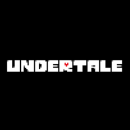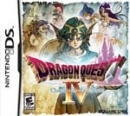Today at Blenheim, a place associated with Winston Churchill, I addressed leaders at the European Political Community Summit. I stressed the importance of unity, bravery, and decisive action in defending our values and ensuring a peaceful, secure, and prosperous future for Europe.
This palace is not solely connected to him, but it is he who adds grandeur to Blenheim. We hold dear Churchill’s jokes and remarks, even if we wouldn't want to be the subjects of such biting humor.
We return to his speeches and measure our principles against his decisions, aspiring to similar heights. Yet, it was not this that created his legend. It was his ability to be a steadfast barrier between history and cowardice. Bravery made Churchill – Churchill.
Bravery won the greatest battle of his life. It was the battle for Britain and for Europe. Will Europe be a continent that neither surrenders nor sells itself to tyrants? Will Europe be a continent of nations and communities, not a few führers and their hatred?
We see how much the bravery of previous generations has won for us —a peaceful Europe for so long. Now, our bravery and cooperation must achieve no less, so the children of our nations can someday look back at us and see the pillars of their peace, security, and prosperity.
I will focus on three points today. First, we have maintained unity in Europe, which means Putin has missed his primary target – he has failed to create division in Europe. The more decisive Europe is in preserving this unity, the longer-lasting peace we will ensure.
Putin cannot sustain relationships with truly strong leaders. This is our advantage, but it remains only as long as we are united. He may try to tempt or pressure you individually. Everyone chooses how to act and what legacy to leave.
If someone in Europe tries to resolve issues behind others’ backs or even at the expense of someone else, if someone wants to make shady trips to the capital of war – to talk and perhaps promise something against our common interests or at the expense of Ukraine or other countries, then why should we consider such a person? The EU and NATO can also address all their issues without this one individual.
Second, the reality on the battlefield is more convincing than any abstract deliberations. We have stopped the Russian advance on Kharkiv. Putin has sacrificed tens of thousands but has achieved nothing significant.
This was made possible by the bravery of our warriors and partners, who have lifted limitations on the use of Western weapons along our border. Did this lead to escalation? No, it blocked Putin’s attempt to expand the war. Did Putin have any response? No.
Even when a Russian missile strikes children with cancer, as happened recently, it only repeats the evil we have already seen from Russia in this war. We must act bravely to achieve results. We can steer this war towards its just ending with the power of our weapons and diplomacy.
The more effective our air defense, the more helpless Putin will be. The fewer restrictions we have on the use of effective weapons, the more Russia will seek peace. Military airfields from which Russian jets take off with bombs against our cities and launch sites of Russian missiles must be destroyed.
This will reduce Russia’s capability to continue the war. The missiles and drones are not bearers of state sovereignty, so there must be a collective will to shoot them down.
I appeal to all leaders who can contribute to the required bravery. These steps must be taken. I address primarily the United States, the UK, France, Germany, and Poland – your bravery can be decisive for peace.
Third, diplomacy. Everything that adds to our collective strength is useful for bringing peace closer. I am grateful for supporting the opening of negotiations for Ukraine’s membership in the EU.
This proved that even in the most difficult circumstances, the EU can keep its promises, giving Ukraine moral strength. The people fighting for Ukraine and for Europe should feel that Europe is becoming closer.
I also thank those who support Ukraine on its path to NATO. Although Ukraine’s membership has not yet united all 32 NATO states, we have achieved that the complete elimination of the security deficit in Europe through Ukraine’s accession to NATO has become irreversible.
This year, we must focus on Peace Summits. I am grateful to Switzerland and all partners who helped organize the first Peace Summit. It was a success for everyone who wants a just end to this war. Now we are preparing for the second Peace Summit.
Soon, working groups will begin on the points of the Peace Formula: energy security, food security, and a humanitarian group for the release of prisoners and the return of deportees. Later, there will be other groups.
I ask all to support these efforts, join the common work, and choose the points of the Peace Formula where the leadership can be shown. Convince partners around the globe to be brave regardless of threats and blackmail – their joint efforts are needed for peace.
When the aggressor loses – the world wins. This has happened repeatedly in human history. It must happen this time too, to stop Russia’s aggression.





























































 Essay Pro
Essay Pro